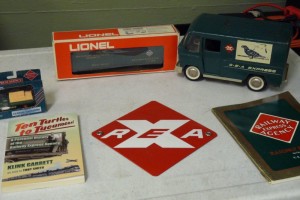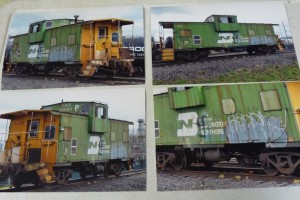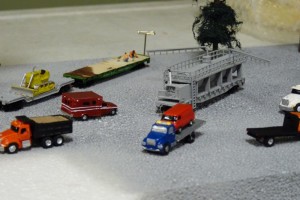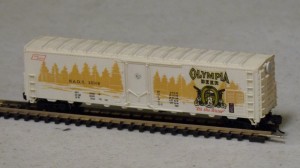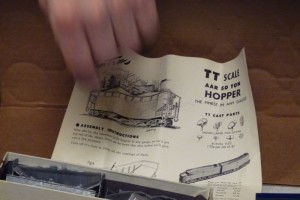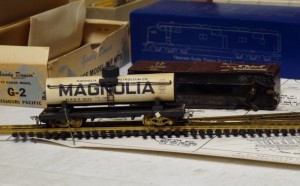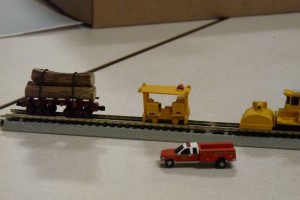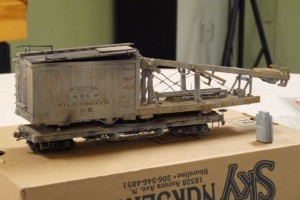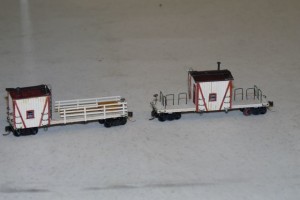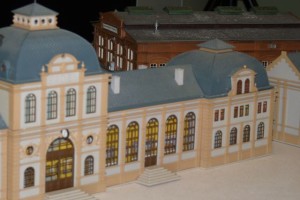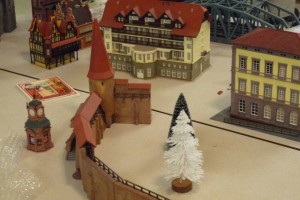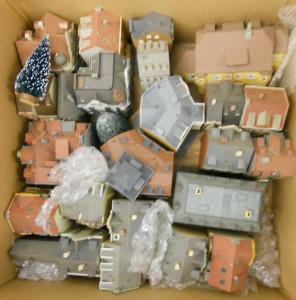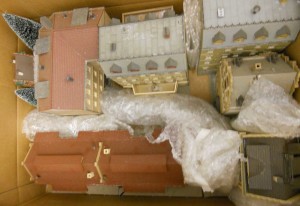By Jeff Moorman
Join us on Thursday (May 2) for our next clinic. Our topic will be railroading in the 1930s.
Last month Tom K regaled us with a nice presentation on the Railway Express Agency (REA). Probably the overview of this organization is the opening paragraph of the Wikipedia article on the same:
The Railway Express Agency (REA) was a national monopoly set up by the United States federal government in 1917. Rail express services provided small package and parcel transportation using the extant railroad infrastructure much as UPS functions today using the road system. The United States government was concerned about the rapid, safe movement of parcels, money, and goods during World War I and REA was its solution to this problem. REA ceased operations in 1975, when its business model ceased to be viable due to the construction of the interstate highway system making the UPS business model cost less to the customers.
Tom’s father had worked for the REA for 35 years and Tom had lots of anecdotes with which to punctuate the discussion. There were railway-related express delivery companies in the U.S. back as 1839. And they flourished through the second half of the 19th century. By 1900 there were 4 principal such companies, three of which were consolidated into the government-run REA in 1917.
In 1927 the REA began an air express division and in 1929 the REA was purchased back from the government by a group of 86 railroads who owned it in proportion to their express traffic volume.
Often REA offices were co-located in depots/stations, but large cities had their own buildings. The REA office (warehouse, really) in Seattle was located SW of the King Street station. It was torn down to make room for the King Dome. It would have been in the east end of the north parking lot.
Tom could remember going there with his Dad. He can also remember his Dad sneaking him aboard a train or two where REA crews would sort packages between stations, much as the Postal crews did in their mail cars.
At its peak the REA had 45,000 employees and some 30,000 offices. It was said that during WWII the REA had the largest truck fleet in the United Sates. It was quite a large organization.
Remember, if you are modeling a period before about 1970, don’t forget to include the presence of the REA.
Thanks, Tom, for an entertaining and informational program.
Just two folks brought stuff for show and tell:
- Bobj had a Milwaukee diesel, hopper, and caboose which he had used to practice his chalk weathering skills.
- Tom K provided several pieces of REA memorabilia, including a nice HO delivery truck.
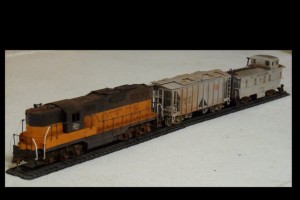
Bobj’s Weathered Train
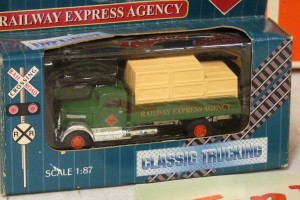
REA Truck Model
We meet at the Ronald United Methodist Church, 17839 Aurora Avenue North, Shoreline, WA, on the west side of Aurora (State Route 99) between 175th and 185th Streets, between the Cadillac dealer on the south and Deseret Industries to the north. Going southbound on Aurora, make a right-hand turn into the church driveway immediately after passing Deseret. The parking lot is at the rear of the church. For regular meetings, enter the lower, left side of the church from the rear lot.
Meetings are the first Thursday of each month, except July and August. In June we usually do a tour and we’ll talk about that on Thursday. Doors open around 7:00 PM and the program starts at 7:30.
Remember the next meeting is May 2. Hope to see you there or at least sometime on down the line.

